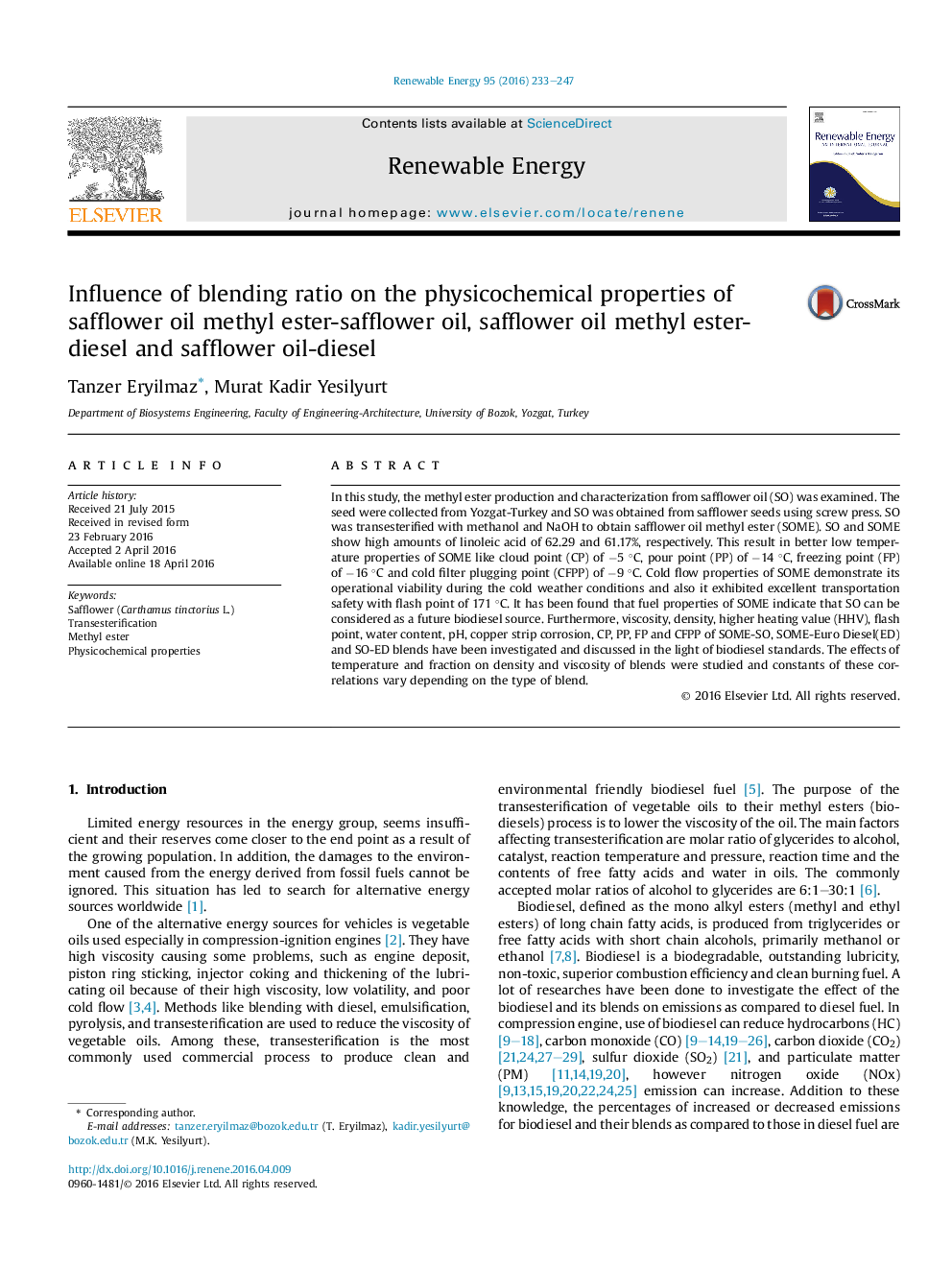| کد مقاله | کد نشریه | سال انتشار | مقاله انگلیسی | نسخه تمام متن |
|---|---|---|---|---|
| 299696 | 512440 | 2016 | 15 صفحه PDF | دانلود رایگان |
• Methyl ester was produced by alkaline transesterification in one step.
• The transportation safety and low temperature properties of safflower oil methyl ester were excellent.
• Fuel characteristics of safflower oil methyl ester-safflower oil, safflower oil methyl ester-diesel and safflower oil-diesel are determined.
• Generalized equations for estimating properties of blends versus blend ratio (vol. %) are developed.
In this study, the methyl ester production and characterization from safflower oil (SO) was examined. The seed were collected from Yozgat-Turkey and SO was obtained from safflower seeds using screw press. SO was transesterified with methanol and NaOH to obtain safflower oil methyl ester (SOME). SO and SOME show high amounts of linoleic acid of 62.29 and 61.17%, respectively. This result in better low temperature properties of SOME like cloud point (CP) of −5 °C, pour point (PP) of −14 °C, freezing point (FP) of −16 °C and cold filter plugging point (CFPP) of −9 °C. Cold flow properties of SOME demonstrate its operational viability during the cold weather conditions and also it exhibited excellent transportation safety with flash point of 171 °C. It has been found that fuel properties of SOME indicate that SO can be considered as a future biodiesel source. Furthermore, viscosity, density, higher heating value (HHV), flash point, water content, pH, copper strip corrosion, CP, PP, FP and CFPP of SOME-SO, SOME-Euro Diesel(ED) and SO-ED blends have been investigated and discussed in the light of biodiesel standards. The effects of temperature and fraction on density and viscosity of blends were studied and constants of these correlations vary depending on the type of blend.
Journal: Renewable Energy - Volume 95, September 2016, Pages 233–247
